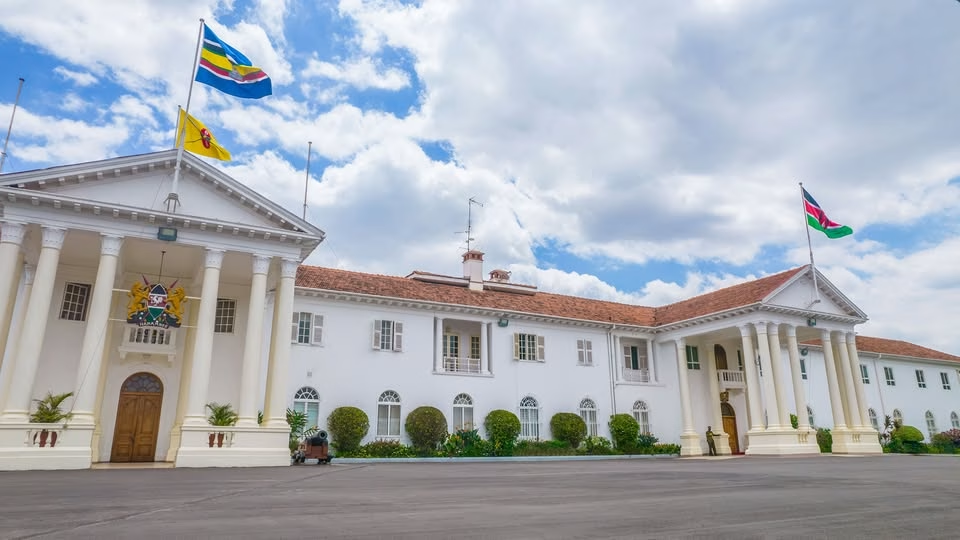A colossal, 8,000-seater church is currently taking shape within the hallowed grounds of State House, Nairobi, a project with an estimated price tag of KSh 1.2 billion, as widely reported by Kenyan media. This ambitious venture, firmly and supported by President William Ruto, has generated a heated national debate, cutting sharply into those who see it as a testament to faith and those who see it as a grave misallocation of priorities and even a desecration of Kenya’s secular constitutional identity.
The Vision: Design, Features, and Its Place in State House
While comprehensive official records on the contractors and timelines remain largely under wraps at State House, recent accounts, quoting the architect’s diagrams and drawings, offer a graphic account of the ambitious project. The new church is to be a sturdy, cathedral-style structure, much of an upgrade to the “iron sheet church” President Ruto supposedly found “unfit for State House” upon entering office.
The look, attributed in some reports to Skair Architects Limited, is reportedly adopting a giant neoclassical-modern mix style. Some of its famous features are said to include:
Famous Crosses: Crosses are incorporated into the building, explicitly declaring its religious purpose.
Tall Stained-Glass Windows: These are reportedly gracing the building, which will have sunlight pouring into the giant interior, making it majestic and solemn.
Gigantic Double Pillars and Huge Arched Windows: These elements of the main entrance’s architecture contribute to its looming and regal look.
Twin Crosses at the top and a High, Slight, Clerestory-Type Central Building: These also contribute to how well it adheres to ecclesiastical style and architectural generosity.
The church’s principal purpose is to act as a designated place of worship for the President, his relatives, and State House staff. Besides daily prayers, its huge seating capacity suggests that it will serve to host national prayer activities, high-level interfaith rituals, and diplomatic functions.
President Ruto’s Brazen Exposition and Financing on His Own Account Claim
President William Ruto has faced the growing controversy head-on, repeatedly affirming that he finances the church construction himself and uses no taxpayer money. Speaking categorically on Friday, July 4, 2025, he explained, “Mimi ni mtu naamini kwa Mungu and I have no apologies to make. Kwa kujenga kanisa, I have no apology, na hakuna mtu nitaomba msamaha. Ni kweli kanisa inajengwa hapa State House na haitagarimu mtu yeyote hata shilingi.” (I am a person who believes in God and I have no apologies to make. For building a church, I have no apology, and I will not ask anyone for forgiveness. It is true a church is being built here at State House and it will not cost anyone a single shilling.)
Furthermore, he clarified that he did not “start” a church at State House, but rather discovered an existing “mabati” (iron sheet) chapel that he felt was below the presidency’s standards. Consequently, he decided to build a more “respectable” and permanent structure using his own money. Additionally, he explained that construction continues and will likely finish within the next few months. Moreover, he mentioned that he will hold prayer sessions at the new building once workers complete it.
Read also: Kenyan Airtel Data Center to be Constructed in Nairobi
Public Outrage and Constitutional Issues
The public has voiced serious outcry over the project’s KSh 1.2 billion cost, despite President Ruto’s claims of self-financing. Kenya’s challenging economic situation—featuring extremely high living expenses, endemic unemployment, and underdeveloped public amenities—exacerbates this outcry. Critics like MP Peter Salasya and lawyer Ndegwa Njiru claim this manifests misplaced priorities and reveals a dire disconnect from ordinary Kenyan citizens’ suffering.
Critics also express increasing fears that the project violates the constitution. Citing Article 8, which declares Kenya a secular republic with “no state religion,” critics like Salasya maintain that developing a high-profile church in the seat of government would blur the line between church and state and appear as pandering to one religion. Activist attorney Miguna Miguna has labeled the plan “primitive plunder.” The Atheists in Kenya Society has even threatened litigation, viewing the building as “anti-democratic and promoting Christian nationalism.”
The public outcry, amplified on social media, questions the wisdom of spending so heavily on a church when urgent matters like healthcare, education, and unemployment among young people remain in the balance. And with its ascendancy, the KSh 1.2 billion State House Church has become a potent symbol of the complex dynamic between religion, politics, and public money in Kenya, igniting the national conversation on priorities and leadership.
Read also: Kenya’s Government Partners with World Bank in the 165-Kilometer Nairobi Rail Expansion Plan
State House Church Project Factsheet
Project: 8,000-seater church construction at State House, Nairobi
Cost: KSh 1.2 billion
Design: Neoclassical-modern hybrid by Skair Architects Limited
Cathedral-like structure with prominent crosses
Tall stained-glass windows and massive double pillars
Twin rooftop crosses and clerestory-style central edifice
Purpose: Worship facility for President, family, and State House staff; national prayer events and diplomatic gatherings
Funding: President Ruto claims personal funding, no taxpayer money
Status: Construction ongoing
Read also: Kenyan Government Approves Dualling of the 20.2-Kilometer Nairobi Northern Bypass Project

